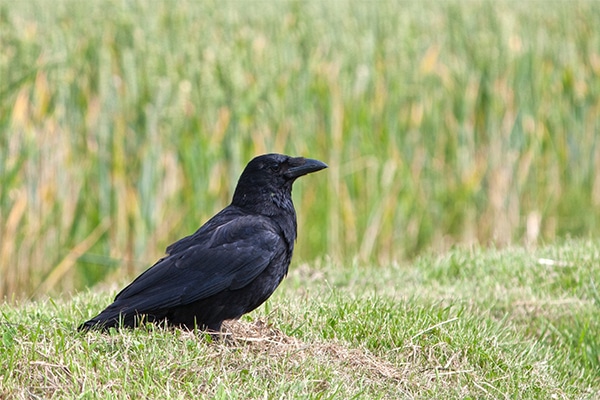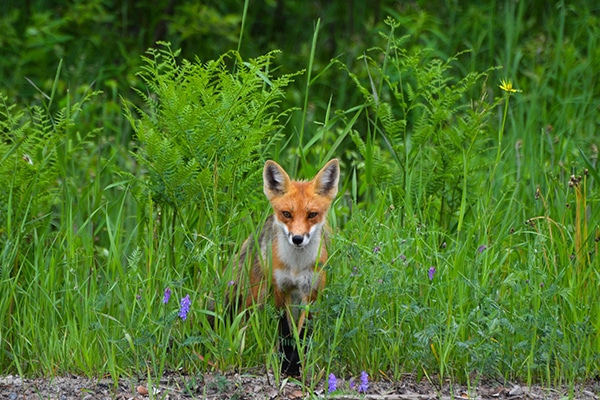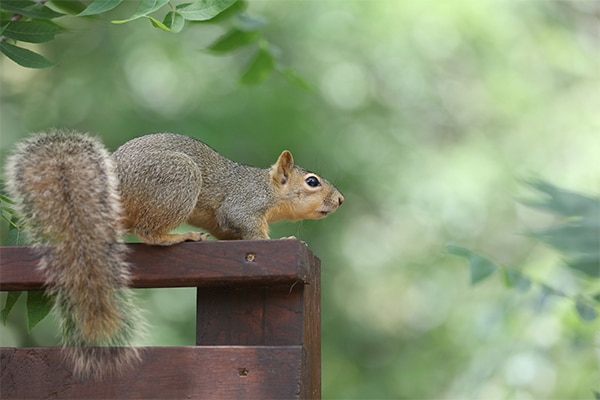
Trapping pest birds in the UK
Pest and predator control is an integral part of conservation and wildlife management and it is necessary to reduce predation and damage to acceptable levels.
Get information on the legal shooting season for mammals and birds in the UK.
Learn about our current conservation projects and how you can get involved.
Comprehensive information and advice from our specialist firearms team.
Everything you need to know about shotgun, rifle and airgun ammunition.
Find our up-to-date information, advice and links to government resources.
Everything you need to know on firearms law and licensing.
All the latest news and advice on general licences and how they affect you.


Pest and Predator Control Woodpigeon code of practice
The woodpigeon (Columba palumbus) is a major agricultural pest in the UK. It is legal to shoot woodpigeons throughout the year in accordance with the terms and conditions of relevant, current general licences.
The woodpigeon produces high-quality meat for all to enjoy.
High standards underpin public and political support for shooting, now and in the future.
This code provides advice at two levels:
The following golden rules apply:
Woodpigeon decoying is the art of building a hide on a field where pigeons are feeding and using artificial or dead bird decoys to attract pigeons to within effective shotgun range. To achieve the best results requires reconnaissance, considerable patience, knowledge and fieldcraft.
Hides may be built using camouflage nets, straw bales or natural cover. When using bales, remember to ask the farmer’s permission before you move them and always replace them after you have finished shooting.
Natural hides are made with materials found on the farm and should be dismantled at the end of the shooting day. Do not cut into hedgerows or otherwise damage the farmer’s property without permission.
The hide should be large enough to accommodate the shooter, any dogs and equipment. It should have as level a floor as possible, leaving sufficient room to shoot safely.
Shooting pigeons on flightlines is very popular. Reconnaissance will determine the line of flight, allowing Guns to stand concealed on the edges of woods or in hedgerows and shoot passing birds without the aid of decoys.
Normally practised during late winter, Guns position themselves before dusk in woods where pigeons are known to roost and wait for the birds to return from their day’s feeding.
Mixed woods of conifers and hardwoods are the most popular and pigeon droppings under the trees will show the best places to stand.
Permission from the relevant landowner/farmer must be sought:
Try to get permission in writing. BASC has a pest control permission slip which can be downloaded here.
Where relevant, check with the gamekeeper/farmer to avoid interfering with gamekeeping or farming activities.
When walking through fields of growing crops, take care to do as little damage as possible. Respect hedges and fences and leave gates as you find them.
You should not:
You should:
Great care should be exercised when siting a hide. Make sure you are aware of all public rights of way, roads and dwellings, and that the arcs of fire are safe before starting to shoot.
Consider where your spent shot will fall; remember shot can travel some 350 yards with a strong wind behind it. Avoid shot landing on neighbouring land where you do not have permission to be (check the relevant trespass/access legislation for your country).
Boundaries must be respected, and shooting should not be undertaken without consideration of nearby buildings, houses or neighbouring land. Always consider the potential noise disturbance when shooting in the vicinity of livestock, horses and residents. Prior notification of your activity to nearby residents, horse owners, etc., may be appropriate.
Be aware of other countryside users, such as walkers, horse riders and vehicles. Take care not to cause fear or alarm or in any way endanger them, and don’t forget that you may be concealed from them. It is worth considering that during the holiday periods and at weekends the likelihood of people visiting the countryside is higher.
Shooting from a hide often involves taking shots at birds approaching the decoys at or near ground level. It is vital that the pellets from your shot do not land anywhere you cannot see to be safe. In addition, consideration must be given to the possibility of pellets ricocheting off the ground. Do not shoot towards livestock.
It can be dangerous for two people to be shooting from a hide at the same time. If two people are sharing a hide, one gun should always be kept in a slip, and it must always be unloaded. The person not shooting should be behind the person shooting.
Shooting near overhead power lines or insulators can result in severe injury or death. The main points to remember are:
If accidental damage does occur, dial 999 or 112 for the emergency services, contact your local electricity company on 105 and keep well clear.
To achieve a consistently high kill rate, a well-fitting gun of any bore can be effective, provided it is used with the shooter’s ability in mind. Additionally, the limitations of the choke/cartridge combination need to be considered.
The range at which you can expect your gun to kill pigeons cleanly is influenced by a combination of pellet size and pattern density, together with your accuracy. The pattern density required is a minimum of 140 pellets within a standard 30″ circle at your personal maximum range.
To check the cartridges deliver the minimum pellet density, at least five should be patterned, counted separately and the results averaged. Traditionally, size no. 6 pellets are used but at longer ranges larger pellets may also be used.
If shooting on or over the English or Welsh foreshore or certain Sites of Special Scientific Interest (SSSIs), it will be necessary to use non-lead shot cartridges. If shooting in Scotland or Northern Ireland, non-lead shot cartridges must be used on or over wetlands.
Steel shot is the most cost-effective alternative to lead for pigeon shooting. Its lower density means you should use pellets at least one or two sizes larger (i.e., no. 4 or no. 5 if changing from lead no. 6).
As specified above, when using steel shot, you still need a pattern density of at least 140 pellets in a 30″ circle at your personal maximum range.
Steel shot is now available with a biodegradable wad, these have proven to be very effective and are well worth trying. The shooting sector is phasing out the use of lead shot and single-use plastic wads for live quarry shooting by 2025 in favour of sustainable ammunition. More information on sustainable ammunition.
Hearing protection should be worn when shooting and some form of eye protection may be appropriate.
For security reasons, a gun should never be left unattended. Remember that a gun must not be taken onto neighbouring land for any reason without permission, except when gaining access via a public right of way to your shooting land (when the gun is in a slip).
In Scotland, a gun, which should be in a slip, can be carried;
The shooting of woodpigeons is permitted under the authority of relevant general licences issued by the Department for Environment, Food & Rural Affairs (Defra) for England, Natural Resources Wales (NRW) for Wales, NatureScot for Scotland, the Department of Agriculture, Environment and Rural Affairs (DAERA) in Northern Ireland, and the Department of Environment, Food and Agriculture (DEFA) on the Isle of Man.
No individual application is required for these licences; however, it is essential that you comply fully with the terms and conditions of any relevant general licence. Details of general licences can be found here.
General licences authorise the control of specified species for defined purposes listed on the relevant licence, such as ‘preventing serious damage’. If a species, location or reason for control is not covered by a general licence, an individual licence must be applied for from the relevant authority.
Depending on which home country you are operating in, on certain designated sites the use of a general licence may not be applicable (there are details around any such site restrictions listed on each relevant licence). Permission (known as ‘consent’) from the relevant government agency may also be required.
The species listed on the general licences and the purposes for which the licences are issued, can vary between countries. BASC strongly recommends that anyone wishing to control woodpigeons under the authority of a general licence should read the advice available online here.
Note: Wild-living, former racing and homing pigeons often fly with feral pigeons, but these birds are strictly protected as they are still regarded as the property of their original owner. While they normally have leg rings to show their ownership, identification in the field can be difficult. If in doubt, do not shoot.
Woodpigeon (authorised for control under general licences)
The largest of our pigeon species can be seen singly and in small and large flocks. They are predominantly grey with a white patch on each side of the neck of adults, and a characteristic broad white bar on the wings of both adults and juveniles.
This is one of the best ways of identifying the woodpigeon in the field, as no other pigeon or dove has these wing bars. Wings often make a clattering noise when they take flight.
Feral pigeon (authorised for control under general licences)
Similar to the stock dove (see below) but highly variable in colour. Usually in flocks which are often found in and around farms and other buildings, and near urban areas.
Collared dove (not authorised for control under general licences)
Much smaller than the woodpigeon, slender, and grey/sandy in colour, collared doves have a wide terminal white band on their tail, and a black neck band bordered with white. Usually seen in pairs or small flocks and often tamer than other species of pigeon. In flight, the dark primaries contrast with the light plumage. Juvenile birds lack the black neck band.
Stock dove (not authorised for control under general licences)
Smaller and sleeker than the woodpigeon and fly with a faster wingbeat. Their plumage is rather uniformly grey with green patches on the neck and partial black wing bars which can be seen at close range.
Often in small flocks mixing freely with woodpigeons, they can be distinguished by their smaller size, darker colour, and absence of white patches or bars. The stock dove is often mistakenly called the ‘blue rock’. Great care must be taken, as these birds often fly with woodpigeons and feral pigeons and come readily to decoys.
Rock dove (not authorised for control under general licences)
Similar to the stock dove but paler and with a pronounced white upper rump and two black bars on the wings. Flight is very fast. Usually occurs in small flocks on the western coasts of Scotland.
Racing pigeon (not authorised for control under general licences)
Very similar in appearance to feral pigeons. Occurs both singly and in a flock. Identifying characteristics can include presence of leg rings, and their fast, straight, often low flight paths.
Turtle dove (not authorised for control under general licences)
Much less common and much darker than the collared dove, especially the wings which have brown-black patterned feathers. They have white patches with black neck stripes (not in juveniles). The tail is very dark with white edging.
BASC runs a one-day course called Introduction to Woodpigeon Shooting.
Contact the BASC training and education department on 01244 573 018 for further details on available courses.
It is advisable to have adequate legal liability (third-party) insurance when shooting. Membership of BASC includes insurance for recreational sporting activities.

Pest and predator control is an integral part of conservation and wildlife management and it is necessary to reduce predation and damage to acceptable levels.

This Code is aimed at those who carry out fox control in the English countryside to describe best practice when using snares.

The most effective way of conserving red squirrels is by reducing the number of greys,, which also take birds’ eggs and damage bird and pheasant feeders.
Sign up to our weekly newsletter and get all the latest updates straight to your inbox.
© 2023 British Association for Shooting and Conservation. Registered Office: Marford Mill, Rossett, Wrexham, LL12 0HL – Registered Society No: 28488R. BASC is a trading name of the British Association for Shooting and Conservation Limited which is authorised and regulated by the Financial Conduct Authority (FCA) under firm reference number 311937.
If you have any questions or complaints about your BASC membership insurance cover, please email us. More information about resolving complaints can be found on the FCA website or on the EU ODR platform.
This website uses cookies so that we can provide you with the best user experience possible. Cookie information is stored in your browser and performs functions such as recognising you when you return to our website and helping our team to understand which sections of the website you find most interesting and useful.
Strictly Necessary Cookie should be enabled at all times so that we can save your preferences for cookie settings.
If you disable this cookie, we will not be able to save your preferences. This means that every time you visit this website you will need to enable or disable cookies again.
This website uses Google Analytics to collect anonymous information such as the number of visitors to the site, and the most popular pages.
Keeping this cookie enabled helps us to improve our website.
Please enable Strictly Necessary Cookies first so that we can save your preferences!
More information about our Cookie Policy